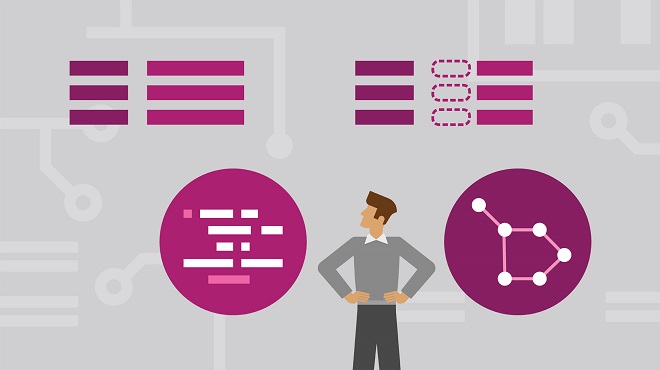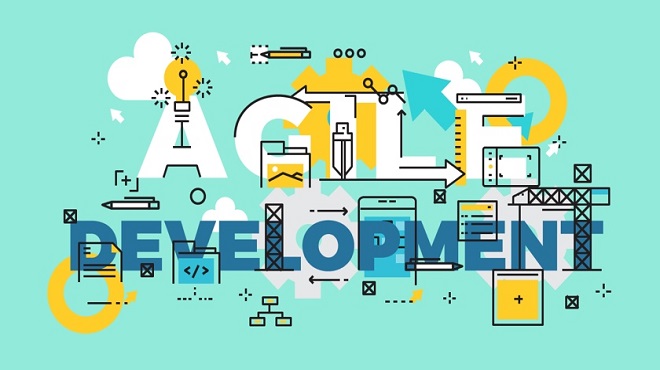What is NoSQL Database and its Benefits
A NoSQL (originally known as “non SQL” or “non relational”) database serves a method for storage and extraction of data that is modelled in a way different than the tabular relations applied in relational databases. It is known that NoSQL is essentially an approach to database design which can properly contain a wide range of data models, comprising of document, key-value, columnar and graph formats. It is basically an alternative to relational databases used traditionally in which data is positioned in tables and data schema is cautiously designed prior the database is created. The plus point is that NoSQL database development are particularly helpful for working with huge sets of distributed data.
NoSQL vs. SQL:
The basic difference between SQL and NoSQL is actually not much complicated and the differences can be easily understood. Both of them adopt a unique philosophy for the way in which data must be stored and extracted.
Through the help of SQL databases, all data owns an inherent structure. Some traditional database such as MySQL, Microsoft SQL Server, or Oracle Database applies a schema (known as a prescribed definition of the way data entered within the database would be composed. To understand this, for example, a particular column into a table might be limited to integers only. Due to this, the data entered in the column would have a high degree of normalization. Moreover, the rigid schema of a SQL database also lets it comparatively easy to accomplish aggregations on the data, say for example, by way of JOINs.
Through NoSQL, it is assured that data can be saved in a free-form or schema-less fashion. Moreover, any data can be saved into any record. You would find four general models for storing data along with the NoSQL databases, and this lead to four general types of NoSQL systems:
Document databases: Entered data is saved either in the form of free-form JSON or in the form of structures “documents.” In this, the data can be integers, strings, freeform text, etc. In this, there is no inherent requirement to indicate what fields, if any, the particular document would contain. (Example of Document databases -CouchDB, MongoDB)
Key-value stores: Free-form values ranging from strings or simple integers to complex JSON documents are easily accessed into the database by means of keys. (Example of Key-value stores -Redis, Riak)
Wide column stores: Instead of rows, data is saved in columns and this approach is identical to that of a conventional SQL system. You can group any number of columns or you can aggregate them as per the requirement for data views or queries. (Example of Wide column stores -HBase, Cassandra)
Graph databases: In this, data is denoted as a network or graph of entities as well as their relationships in reference to every node into the graph or a free-form amount of data. (Example of Graph databases -Neo4j).
Benefits of NoSQL database:
Elastic scaling:
For many years, database administrators have stayed dependant on scale up (purchasing larger servers as database load increases) rather than scale out (allocating the database over more than one host as load increases). But, it is known that when transaction rates and availability requirements rises, and whenever databases shift into the cloud or over virtualized environments, the financial benefits of scaling out on the commodity hardware become appealing.
It is possible that RDBMS (relational database management systems) may not scale out straightforwardly on commodity clusters; however, the new type of NoSQL databases are developed to enlarge evidently to seek benefits of new nodes, and also they are typically developed keeping in mind low-cost commodity hardware.
NoSQL databases apply a horizontal scale-out method that lets it very simple to include or eliminate capacity rapidly and non-disruptively through the help of commodity hardware. The aspect removes the terrific cost and complication of manual sharding which is vital when trying to scale RDBMS.
No dependence on SQL magic:
Structured Query Language (briefly known as SQL) is essentially the predominant language utilized to query (RDBMS). Since many years, being capable to structure queries in order that they do well has become a difficult art. Moreover, complex multitable joins are also not simple to write from memory. Though many NoSQL databases support SQL access, it is certain that they do so in order to provide compatibility with prevailing applications like business intelligence (BI) tools. Furthermore, NoSQL databases works to provide support to their own access languages which can read the saved data, rather than requiring a relational model into the core database. This more developer-centric approach to the databases’ design and their access application programming interfaces (i.e., API) are known to be the cause behind why NoSQL databases have turned extremely popular among contemporary application developers.
No legacy code:
NoSQL databases are new, so they do not have legacy code. This implies that need not to offer support for traditional hardware platforms or keep occasionally used functionality updated. The type of databases enjoys a fast pace in matters of development. Every time, new features are launched, and recent and prevailing features are updated often. This is the reason why NoSQL vendors need not to maintain a huge code base. The plus point is that new major releases takes place on yearly basis rather than occurring every three to five years.
Big Data
Similar to the way the transaction rates have escalated over the past decade, the volumes of data that are being saved too gave escalated enormously. The databases are kind of industrial revolution of data. RDBMS capacity has been rising to match the increments; however, similar to the case with transaction rates, the restrictions of data volumes that can be practically handled by a single RDBMS are becoming unbearable for several enterprises. In present era, the volumes of “big data” which can be handled through NoSQL systems, like Hadoop, surpass those handled by the largest RDBMS.
Capability to handle change over time:
Owing to the NoSQL databases’ schema agnostic nature, they are extremely competent of handling change. This is because you need not to rewrite ETL routines whenever the XML message structure between systems alters.
There are certain NoSQL databases take this a step forward and offer a collective index for the structure, values, and text seen in information. MarkLogic Server as well as Microsoft DocumentDB offers this capability. Whenever a document structure modifies, such type of indexes permit organizations to make use of the information instantly, and does not make them to wait for many months prior you can analyze and rewrite systems.
Comes with flexible data models:
Change management is usually a huge concern for big production RDBMS. Even the slightest changes to the RDBMS’s data model needs to be cautiously managed and may demand downtime or worsened service levels. It is found that NoSQL databases come with more relaxed and nonexistent data model restrictions. Moreover, NoSQL Key Value stores as well as document databases enable the particular application to digitally save any structure it wishes into a data element. The observation suggests that even the more strictly defined BigTable-based NoSQL databases (like HBase, Cassandra) usually permit new columns to be made without any hassle.
The flexible data models of NoSQL has a result that application modifications and database schema modifications need not to be managed as single complicated change unit. Theoretically, this would enable applications to iterate at fast pace, though, there can be certain adverse side effects whenever the application proves incapable to manage data integrity.
NoSQL provides the ability to employ flexible and fluid data models. It is certain that application developers can influence the data types as well as query options which are usually stared as the most suitable fit to the particular application use case in comparison to those that suit the database schema. Ultimately, the result is a seamless interaction amongst the database and application; also, it fosters faster and agile development as well.
Global Availability:
Distributed NoSQL databases have capability to reduce latency and guarantee a reliable application experience irrespective of the place where users are positioned. This can be accomplished by automatically replicating data over multiple servers, cloud resources, or data centres. An additional benefit is a considerably reduced database management load from manual RDBMS based configuration, allowing operations teams to have more time to focus on remaining business priorities.
High Availability:
NoSQL databases are commonly designed to guarantee high availability and prevent the complication that arises with a characteristic RDBMS architecture that depends on primary as well as secondary nodes. There are certain “distributed” NoSQL databases which make use of a masterless architecture that distributes data equally among multiple resources automatically; hence, the application stays accessible for read as well as write operations even during the instance one node fails.
Performance:
Simply by the addition of commodity resources, businesses can boost performance through the help of NoSQL databases. It facilitates business organizations to continually deliver swift and affordable user experiences with an anticipated return on investment for inclusion of resources. This is again accomplished in absence of the overhead linked with manual sharding.




